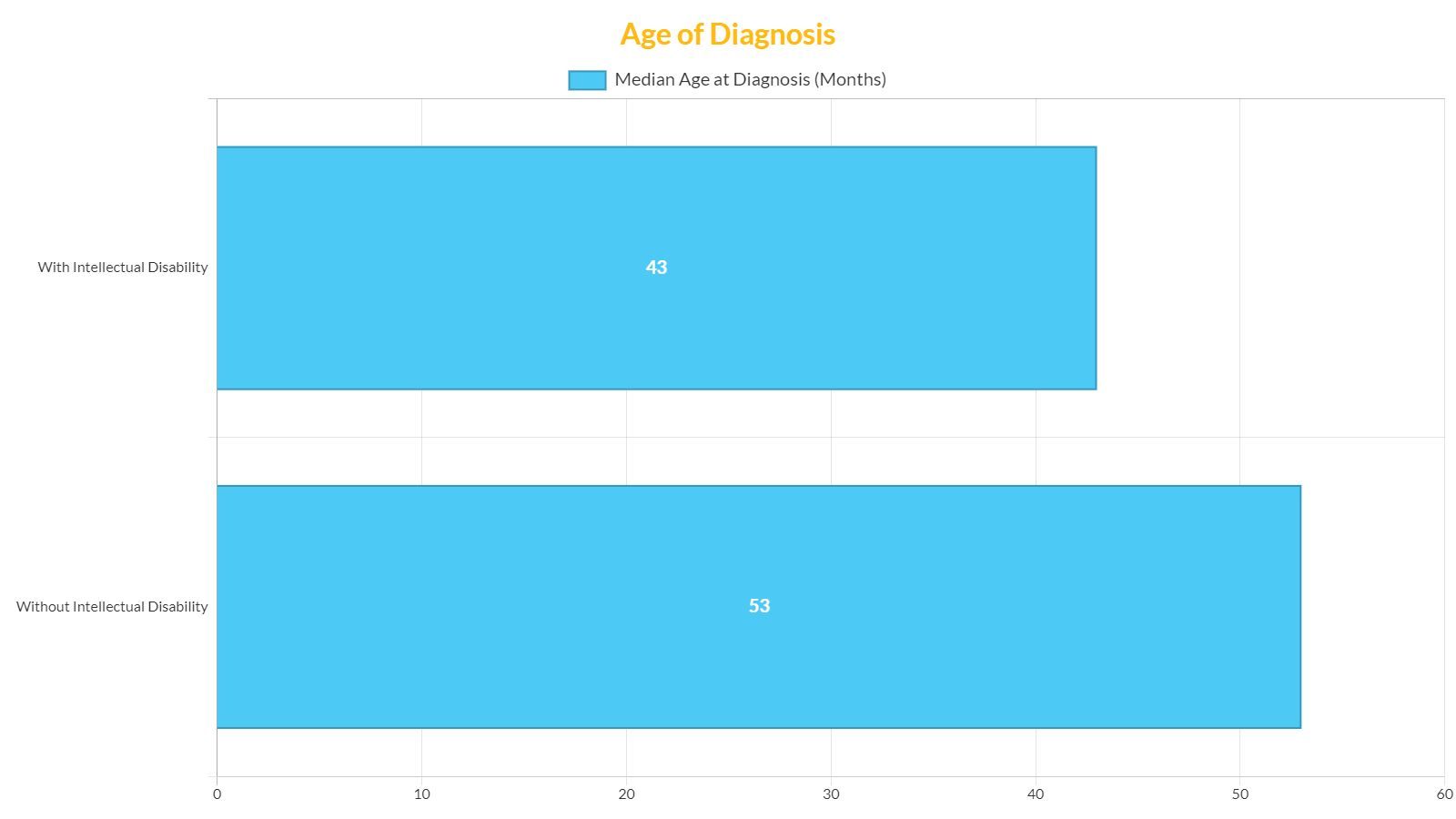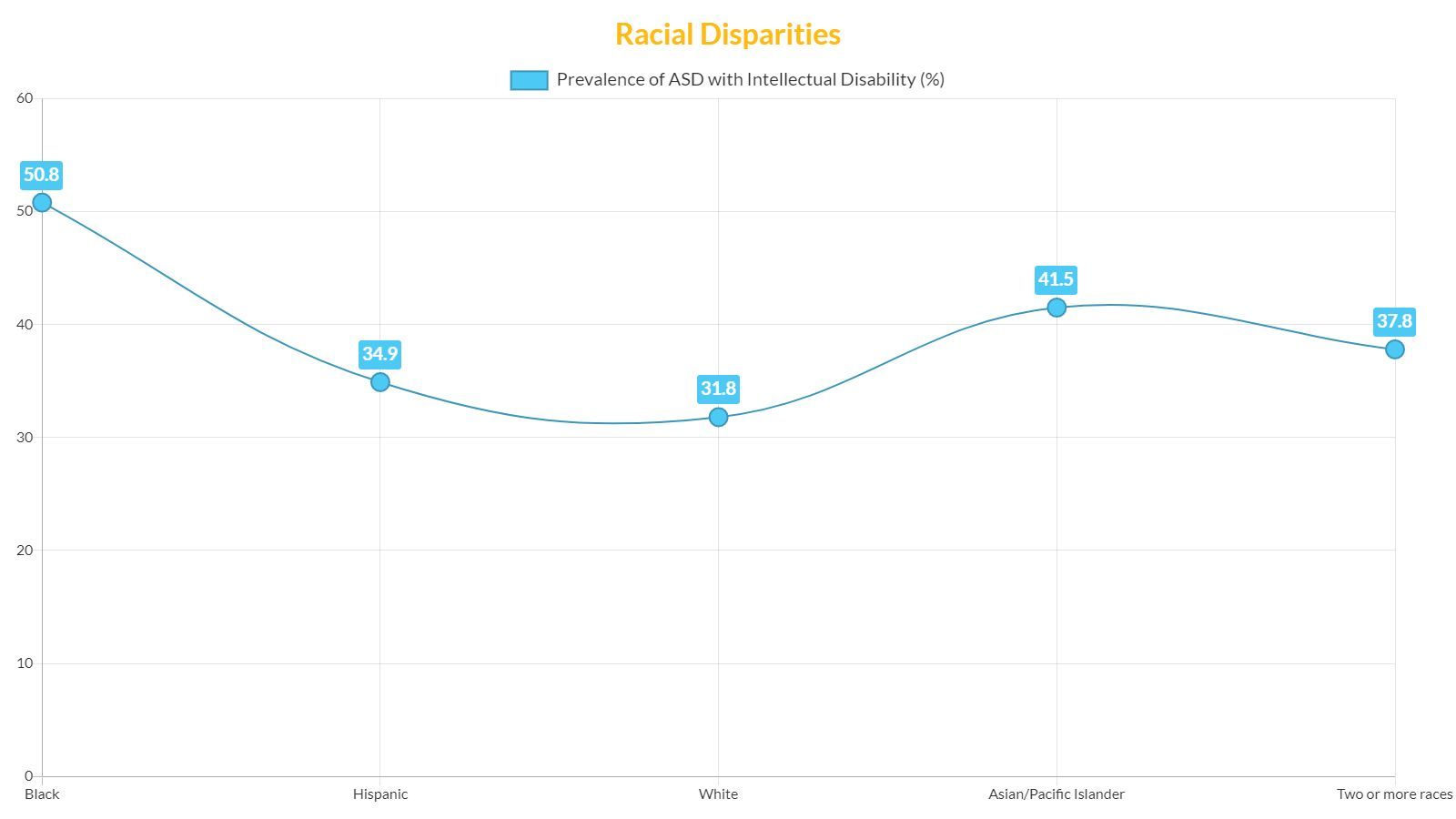Understanding Autism Spectrum Disorder
Autism Spectrum Disorder (ASD) is a complex developmental condition that involves persistent challenges in social interaction, speech and nonverbal communication, and restricted/repetitive behaviors. The effects of ASD and the severity of symptoms are different in each individual.
Definition and Characteristics
ASD is characterized by a range of symptoms and impairments that can affect an individual's ability to function and interact in various contexts. These characteristics are typically apparent from early childhood and affect daily functioning. Key characteristics include:
- Social Communication Challenges: Difficulty with back-and-forth conversation, understanding or maintaining relationships, and nonverbal communicative cues.
- Repetitive Behaviors: Engaging in repetitive movements, routines, or speech patterns, and having highly specific interests or preoccupations.
- Sensory Sensitivities: Over- or under-reacting to sensory inputs such as light, noise, or temperature, or having unusual interests in sensory aspects of the environment.
Diagnosis and Evaluation
Diagnosing ASD involves an evaluation by a team of experts, including developmental pediatricians, child psychologists, and neurologists. The evaluation process includes:
- Developmental Assessments:
These are comprehensive evaluations of the child's developmental milestones and behaviors.
- Behavioral Evaluations: Observations of the child's behavior to identify patterns that align with ASD.
- Parental Input: Discussions with parents or caregivers to understand the child's development and behavior from their perspective.
- Medical Examinations: To rule out other potential causes of the symptoms.
The diagnosis of ASD can be made reliably in children as young as two years old. However, many children do not receive a final diagnosis until they are much older. This delay can hinder access to early intervention services that are crucial for improving outcomes (autism diagnosis rates).
The prevalence of ASD has been increasing, according to data from the ADDM Network, indicating the necessity for awareness and resources to support individuals with ASD and their families. Understanding both autism prevalence rates and autism prevalence worldwide is essential for public health planning and individualized support. Additionally, autism prevalence by gender is an important consideration, as males are diagnosed with ASD more frequently than females.
For more detailed statistics, including regional and demographic breakdowns, explore our sections on national statistics overview and demographic disparities within the context of ASD.
Prevalence of Autism Spectrum Disorder
Understanding the scope of Autism Spectrum Disorder (ASD) is essential for families, professionals, and policymakers alike. Prevalence data can inform resource allocation, intervention strategies, and support systems.
National Statistics Overview
In the United States, the overall prevalence of ASD among children aged 8 years was reported to be 27.6 per 1,000, or approximately one in 36 children for the year 2020. These numbers highlight the significance of ASD as a public health concern and underscore the necessity for comprehensive support and resources for affected families. To better understand autism diagnosis rates and how they have changed over time, continue reading our detailed analysis.
Regional Variances in Prevalence
ASD prevalence is not uniform across the United States; it varies significantly by region. For instance, Maryland reported a lower prevalence of 23.1 per 1,000, while California had a much higher prevalence of 44.9 per 1,000. These regional differences may be influenced by several factors, including access to diagnostic services, awareness of ASD, and regional health policies. The Autism and Developmental Disabilities Monitoring (ADDM) Network, funded by the CDC, provides insights into these variances by estimating the number of children with ASD in different U.S. regions based on health and special education records. For a broader perspective on autism prevalence worldwide, visit our comprehensive guide.
Demographic Disparities
The prevalence of ASD also demonstrates significant demographic disparities. Boys are diagnosed with ASD more frequently than girls, with a prevalence of 43.0 among boys compared to 11.4 among girls. This suggests gender-specific differences in either the development or diagnosis of ASD. Moreover, prevalence rates vary among racial and ethnic groups: non-Hispanic White children had a prevalence of 24.3 per 1,000; non-Hispanic Black or African American children had 29.3 per 1,000; Hispanic children had 31.6 per 1,000; and non-Hispanic Asian or Pacific Islander children had 33.4 per 1,000. Interestingly, ASD prevalence among non-Hispanic American Indian or Alaska Native (AI/AN) children was comparable to other racial and ethnic groups at 26.5 per 1,000.
These disparities highlight the need for tailored intervention strategies and resources that consider cultural, socioeconomic, and gender-specific factors. Understanding these demographic differences is crucial for the development of equitable diagnostic and treatment approaches. For further exploration of these disparities, particularly the autism prevalence by gender, visit our detailed discussion on the topic.
Early Intervention Services
Early intervention services are crucial in the development and well-being of children with Autism Spectrum Disorder (ASD). This section delves into the significance of these services, the disparities in access, and the trends in their utilization, which are critical for parents, educators, and healthcare professionals to understand.
Importance of Early Intervention
Early intervention services are designed to address developmental delays and improve outcomes for children with ASD. These services can range from speech therapy to physical therapy and behavioral interventions. The earlier the intervention begins, the better the potential outcomes for the child. Early intervention has been shown to improve communication, social skills, and learning abilities, which can lead to more independent functioning in later life.
Studies have found that children with ASD who receive early intervention services are more likely to have improved long-term skills and require fewer supports as they grow older. The importance of these services cannot be overstated, as they lay the foundation for a child's future development.
Disparities in Access
Unfortunately, not all children with ASD have equal access to early intervention services. A study from the Autism Research Institute reports that children in affluent areas were 80 percent more likely to receive early intervention services than those in disadvantaged areas, and that black and Hispanic children were less likely to receive these services. These disparities highlight the need for increased awareness and advocacy to ensure equitable access to early intervention services for all children, regardless of their background or socioeconomic status.
Trends in Service Utilization
Trends in the utilization of early intervention services for children with ASD reveal both progress and ongoing challenges. According to
JAMA Pediatrics, there was an increase in Early Intervention Program (EIP) participation during the 10-year period from 2006 to 2016, with only 46.6% of children diagnosed with ASD through active surveillance at age 8 years receiving EIP services.
| Year of Birth | Percentage Receiving EIP Services |
|---|---|
| 1998 | Not Available |
| 2008 | Higher Odds of Receiving EIP |
The study also shows that children with ASD born in 2008 had higher odds of receiving EIP services than children born in 1998. This suggests that there has been some improvement in service utilization over time. However, there is still a significant portion of children with ASD who are not receiving the early intervention services they need.
The data underscores the importance of ongoing efforts to improve access to early intervention services. To learn more about ASD and the challenges related to diagnosis and prevalence, readers can explore autism diagnosis rates, autism prevalence rates, autism prevalence worldwide, and autism prevalence by gender. Understanding the statistics surrounding autism spectrum disorder is vital for advocating for necessary services and support for children with ASD and their families.
Co-Occurring Conditions
Investigating co-occurring conditions in individuals with autism spectrum disorder (ASD) is vital for providing comprehensive care and support. The relationship between ASD and other conditions such as ADHD, gender differences, and the impact these relationships have on diagnosis and treatment, are key areas of focus.
ADHD and ASD Relationship
The co-occurrence of attention deficit hyperactivity disorder (ADHD) and ASD is a significant area of study. Scientific literature indicates that 50 to 70% of individuals with ASD also present with comorbid ADHD. Furthermore, between 30 and 50% of individuals with ASD manifest symptoms of ADHD, particularly at pre-school age. This overlap suggests a commonality in the neuropsychological profiles of both conditions, including challenges with pragmatic language and emotional recognition.
Family and twin studies support the hypothesis that ADHD and ASD may share a common genetic basis, with 50-72% of contributing genetic factors showing overlap. This shared genetic component underscores the importance of understanding the relationship between these two conditions for accurate diagnosis and effective intervention.
Moreover, the co-occurrence of ADHD and ASD is associated with a lower quality of life and poorer adaptive functioning than either condition alone, further highlighting the need for targeted support and services for individuals with dual diagnoses.
Gender Differences
Gender differences in ASD have been a subject of ongoing research. While ASD is more commonly diagnosed in males, females with ASD may exhibit different symptoms and behavioral profiles, which can influence the accuracy and timing of diagnosis. The exploration of
autism prevalence by gender is critical for developing gender-sensitive diagnostic tools and treatments.
| Gender | ASD Prevalence |
|---|---|
| Male | 1 in 42 |
| Female | 1 in 189 |
*Note: The above table represents a general overview and may vary by region and study.
Impact on Diagnosis and Treatment
The presence of co-occurring conditions like ADHD in individuals with ASD can have a profound impact on diagnosis and treatment. Co-occurring ADHD can complicate the diagnostic process, as overlapping symptoms may mask or mimic those of ASD. This can lead to delays in diagnosis, misdiagnosis, or incomplete treatment plans.
Clinicians must consider these complexities when evaluating individuals suspected of having ASD. Accurate assessment tools that can distinguish between ASD and ADHD symptoms are essential for ensuring individuals receive the appropriate interventions and support. Additionally, treatment plans must be tailored to address the unique challenges that arise from the coexistence of ASD and ADHD.
For more information on the nuances of autism diagnosis rates and the importance of early and accurate identification, please refer to our dedicated section on the subject.
Understanding the relationship between ASD and co-occurring conditions is fundamental for providing effective care and enhancing the quality of life for those affected. As research continues to evolve, so too must the strategies for managing ASD and its associated conditions.
Intellectual Disability in ASD
Intellectual Disability (ID) is a common co-occurring condition in individuals with Autism Spectrum Disorder (ASD). Understanding the prevalence, characteristics, and disparities associated with ID in ASD is essential for parents, professionals, and educators.
Prevalence and Characteristics
Among children with ASD, approximately 37.9% have been identified with an intellectual disability. This signifies a notable overlap between ASD and ID, highlighting the need for tailored support strategies for this subgroup. Intellectual disabilities alongside ASD can present unique challenges, including greater impairment in daily living skills and increased dependency on caregivers.

Data sourced from the CDC.
Racial Disparities
There are significant racial disparities in the prevalence of intellectual disability among children with ASD. According to the CDC, intellectual disability was most common among Black children with ASD (50.8%) compared to their Hispanic (34.9%), White (31.8%), Asian or Pacific Islander (41.5%), and multiracial (37.8%) counterparts. These disparities underscore the need for equitable access to diagnostic and intervention services for all racial and ethnic groups.
Data sourced from the CDC.
Age of Diagnosis
The age at which children are diagnosed with ASD can be influenced by the presence of an intellectual disability. The median age of the earliest known ASD diagnosis was 49 months, with variations across regions, ranging from 36 months in California to 59 months in Minnesota. Children with intellectual disability were diagnosed at a younger median age of 43 months compared to those without intellectual disability (median age of 53 months). Early diagnosis is crucial for accessing
early intervention services which can significantly improve outcomes for children with ASD.

Data sourced from the CDC.
The intersection of intellectual disability and ASD presents a complex landscape that requires specialized attention. Understanding these autism spectrum disorder statistics is vital for developing comprehensive support systems that address the specific needs of this diverse population. For further exploration of ASD prevalence, including worldwide statistics and gender-specific data, the linked resources offer extensive information.
Trends in Autism Prevalence
The prevalence of Autism Spectrum Disorder (ASD) has been a subject of much study and discussion. By examining the historical trends and analyzing recent data, one can gain insights into the changing landscape of ASD diagnosis and consider the implications for the future.
Historical Perspective
Over the past two decades, there has been a notable increase in the prevalence of ASD among children. Back in the year 2000, the occurrence was approximately 6.7 per 1,000 children aged 8 years in the United States. Moving forward, this number escalated to 27.6 per 1,000 by the year 2020, marking a substantial rise in ASD diagnosis. This trend suggests a growing awareness and improved diagnostic methods, as well as other factors that may contribute to the increasing rates of ASD identification.
Recent Data Analysis
In the most recent analysis from 2020, the overall prevalence of ASD among 8-year-old children in the United States was found to be one in 36 children, or 27.6 per 1,000. Notably, the prevalence varied significantly by region, with Maryland reporting 23.1 per 1,000 and California at 44.9 per 1,000. The data also highlighted a pronounced gender disparity, with boys being diagnosed 3.8 times more frequently than girls—43.0 per 1,000 for boys compared to 11.4 per 1,000 for girls.
| State | Prevalence per 1,000 | Boys | Girls |
|---|---|---|---|
| Maryland | 23.1 | 37.3 | 9.7 |
| California | 44.9 | 73.2 | 19.1 |
These autism spectrum disorder statistics demonstrate not only an increase in ASD prevalence but also highlight the importance of considering regional and demographic factors when discussing the condition. Understanding these variances is critical for tailoring intervention strategies and resource allocation.
Implications for the Future
The ascending trend in autism diagnosis rates (autism diagnosis rates) has significant implications for educational and healthcare systems, as well as for families and communities. With the recognition that ASD is more common than previously understood, there is an imperative to ensure adequate support and interventions are available. This rising trend underscores the need for continued research into the causes of ASD, as well as efforts to improve early detection and access to treatments.
Furthermore, as the autism prevalence by gender gap suggests, there is a critical need to understand how ASD manifests differently across genders and to adapt diagnostic tools accordingly. Ensuring equitable access to diagnostic services and support across all regions is also vital, given the regional variances observed in prevalence rates (autism prevalence worldwide).
As we look to the future, the increasing trend in ASD prevalence necessitates a concerted, multidisciplinary approach to address the complex needs of individuals with ASD and their families. Policymakers, educators, healthcare professionals, and the broader community must collaborate to create inclusive environments and provide comprehensive services that accommodate the growing number of individuals diagnosed with ASD.














